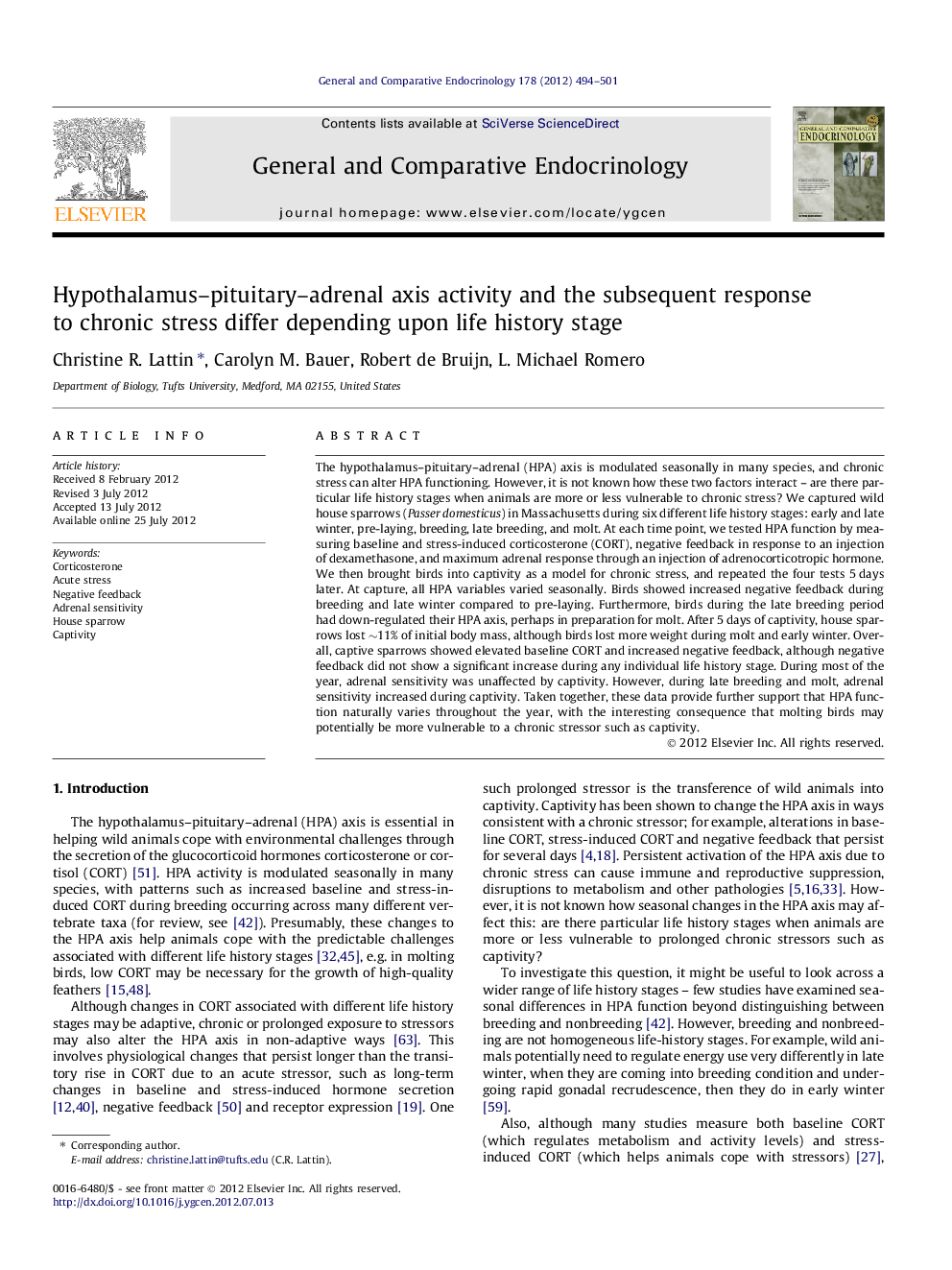| کد مقاله | کد نشریه | سال انتشار | مقاله انگلیسی | نسخه تمام متن |
|---|---|---|---|---|
| 2800610 | 1156117 | 2012 | 8 صفحه PDF | دانلود رایگان |

The hypothalamus–pituitary–adrenal (HPA) axis is modulated seasonally in many species, and chronic stress can alter HPA functioning. However, it is not known how these two factors interact – are there particular life history stages when animals are more or less vulnerable to chronic stress? We captured wild house sparrows (Passer domesticus) in Massachusetts during six different life history stages: early and late winter, pre-laying, breeding, late breeding, and molt. At each time point, we tested HPA function by measuring baseline and stress-induced corticosterone (CORT), negative feedback in response to an injection of dexamethasone, and maximum adrenal response through an injection of adrenocorticotropic hormone. We then brought birds into captivity as a model for chronic stress, and repeated the four tests 5 days later. At capture, all HPA variables varied seasonally. Birds showed increased negative feedback during breeding and late winter compared to pre-laying. Furthermore, birds during the late breeding period had down-regulated their HPA axis, perhaps in preparation for molt. After 5 days of captivity, house sparrows lost ∼11% of initial body mass, although birds lost more weight during molt and early winter. Overall, captive sparrows showed elevated baseline CORT and increased negative feedback, although negative feedback did not show a significant increase during any individual life history stage. During most of the year, adrenal sensitivity was unaffected by captivity. However, during late breeding and molt, adrenal sensitivity increased during captivity. Taken together, these data provide further support that HPA function naturally varies throughout the year, with the interesting consequence that molting birds may potentially be more vulnerable to a chronic stressor such as captivity.
► There is seasonal variation in glucocorticoid negative feedback in wild animals.
► There can be significant changes in HPA function in just a few weeks.
► Captivity can act as a chronic stressor, causing weight loss and HPA changes.
► Chronic stress effects on the HPA axis can vary by life history stage.
► During molt, birds may be more vulnerable to chronic stress.
Journal: General and Comparative Endocrinology - Volume 178, Issue 3, 15 September 2012, Pages 494–501